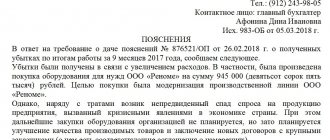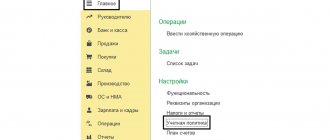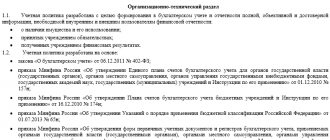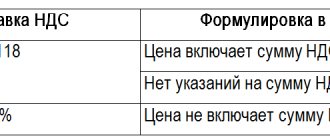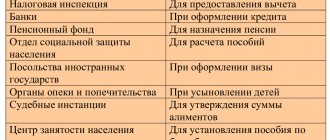General principles for adjusting tax accounting
The general principles for adjusting tax accounting and reporting are set out in Articles 54 and 81 of the Tax Code of the Russian Federation and do not depend on the taxation system used - general or simplified.
In accordance with paragraph 1 of Article 81 of the Tax Code of the Russian Federation, a taxpayer who has discovered in the declaration submitted to the tax authority that information is not reflected or is incompletely reflected, as well as errors:
- is obliged to make the necessary changes to the tax return and submit an updated tax return to the tax authority if errors (distortions) led to an understatement of the amount of tax payable;
- has the right to make the necessary changes to the tax return and submit an updated tax return to the tax authority if errors (distortions) do not lead to an understatement of the amount of tax payable.
Errors (distortions) that did not lead to an understatement of the amount of tax payable when applying the simplified tax system include failure to reflect or understate expenses, as well as overstatement of income. And, of course, the taxpayer is interested in returning the overpayment of taxes resulting from these situations or offsetting them against future payments. This can be done by filing an amended return or, in some cases, by making changes to tax accounting data in the current period.
In the general case, errors (distortions) relating to previous tax (reporting) periods and discovered in the current tax (reporting) period are corrected by recalculating the tax base and the amount of tax for the period in which these errors (distortions) were committed (clause 1 Article 54 of the Tax Code of the Russian Federation).
At the same time, the taxpayer has the right to recalculate the tax base and tax amount in the tax (reporting) period in which errors (distortions) were identified if:
- it is impossible to determine the period of commission of these errors (distortions);
- such errors (distortions) led to excessive payment of tax.
When commenting on the taxpayer’s right to correct errors (distortions) in the current period, regulatory authorities draw attention to the fact of the existence of a tax base in the current period. If in the current reporting (tax) period the organization incurred a loss, then in this period recalculation of the tax base is impossible, since the tax base is recognized as equal to zero (clause 8 of Article 274 of the Tax Code of the Russian Federation, letter of the Ministry of Finance of Russia dated March 24, 2017 No. 03-03-06 /1/17177).
As for the condition of excessive payment of tax in the previous period, then, according to the Russian Ministry of Finance, it is not met if in the specified period the organization incurred a loss or the tax base was equal to zero. Therefore, in such situations, corrections must be made during the period of the error (letter dated 05/07/2010 No. 03-02-07/1-225).
The explanations given relate to the adjustment of the tax base for income tax. Despite this, we believe that under the simplified tax system it is also impossible to “edit” tax accounting in the current period if an error in calculating the tax base was made in a “zero” or “unprofitable” declaration, or if a loss was incurred in the current period.
According to Article 346.24 of the Tax Code of the Russian Federation, tax accounting under the simplified tax system is the accounting of income and expenses in the book of income and expenses of organizations and individual entrepreneurs using the simplified taxation system (hereinafter referred to as KUDiR).
In “1C: Accounting 8”, the report Book of Income and Expenses of the simplified tax system (section Reports) is filled out automatically based on special accumulation registers. Entries in accounting registers for the purposes of the simplified tax system are entered, as a rule, automatically when posting documents that register business transactions. For manual registration of register entries, use the document Entry of the book of income and expenses (STS) (section Operations - STS).
The date of receipt of income is the day of receipt of funds, as well as the day of payment to the taxpayer in another way - the cash method (clause 1 of Article 346.17 of the Tax Code of the Russian Federation).
The procedure for recognizing expenses depends on the conditions set out in paragraph 2 of Article 346.17 of the Tax Code of the Russian Federation, mandatory of which is their actual payment.
Thus, when correcting errors (distortions) made when reflecting (non-reflecting) business transactions in the accounting of an organization using the simplified tax system, tax accounting is adjusted in accordance with the provisions of Article 346.17 of the Tax Code of the Russian Federation, that is, taking into account the payment factor.
Covering letter for the updated declaration under the simplified tax system
Let's take a closer look at the cover letter. It is drawn up to prevent questions from the tax authorities about the reasons that influenced the change in the amounts due for payment to the budget or refund from it.
Basic details that must be indicated in the letter:
- name of the body to which the updated information is provided;
- details of your organization (name, OGRN, INN, KPP, address, telephone);
- outgoing letter number and date;
- signature of the chief accountant and director of the organization; seal, if the company has one.
We recommend including the following information in the body of the letter:
- for what period and for what tax is the updated declaration submitted;
- what exactly was the error discovered by the accountant that resulted in the need to submit an updated declaration;
- what exactly has changed - it is advisable to indicate not only new, but also old values of the changing indicators;
- the amount of tax and penalties to be paid, indicating the details of payment slips for their payment;
- amount of overpaid tax - if you want to refund or offset the overpaid tax, indicate the number and date of the application for refund or offset of tax.
Adjustment of accounting and reporting
Correcting errors (distortions) made when reflecting (non-reflecting) business transactions usually entails simultaneous adjustments to both tax and accounting records. An exception is made by individual entrepreneurs (IP), who are not required to keep accounting records (Article 6 of the Federal Law of December 6, 2011 No. 402?FZ).
In accounting, errors and their consequences must be corrected in accordance with the Accounting Regulations “Correcting Errors in Accounting and Reporting” (PBU 22/2010), approved. by order of the Ministry of Finance of Russia dated June 28, 2010 No. 63n.
The procedure for correcting an error and adjusting the financial statements depends on the significance of the error and the moment it was discovered. For example, a significant error from previous years, identified after the date of signing the financial statements, may lead to the fact that in some cases the organization will have to present revised financial statements or, what is much more serious, correct the comparative indicators of the financial statements by retrospective recalculation (clauses 9, 10 of PBU 22/2010).
It should be taken into account that inaccuracies or omissions in the reflection of facts of economic activity in accounting (reporting) identified as a result of obtaining new information that was not available at the time of its reflection are not errors (clause 2 of PBU 22/2010). The provisions of PBU 22/2010 do not apply to these situations that are not errors, which means that in accounting such distortions must be corrected at the time they are identified without retrospective recalculation. However, it is not always clear how to determine the criterion for information availability.
In any case, small businesses (and these include the majority of simplifiers) are allowed to correct all errors of previous years in a simplified manner, which is established for minor errors, that is, taken into account as part of other income or expenses of the current reporting period without retrospective recalculation (clause 9 PBU 22/2010).
Completing section 2
Fill out separately for each type of business activity. When conducting the same type of activity in several separately located places, section 2 of the UTII declaration is filled out separately for each place (each OKTMO code).
| LINE | HOW TO FILL OUT |
| 010 | Code of the type of business activity carried out by which you fill out this section in accordance with Appendix No. 5 to the Procedure:
|
| 020 | The full address of the place of conduct of the type of business activity indicated on page 010. The region code is indicated in accordance with Appendix No. 6 to the Procedure. See all codes in a separate file here. |
| 030 | Code according to OKTMO of a municipality, inter-settlement territory, settlement that is part of the municipality at the place of business (place of registration of the UTII payer) |
| 040 | The value of the basic profitability per unit of physical indicator per month for the corresponding type of business activity. Taken from clause 3 of Art. 346.29 Tax Code of the Russian Federation. |
| 050 | The value of the deflator coefficient K1 established for the calendar year. They are taken from the relevant order of the Ministry of Economic Development. |
| 060 | The value of the adjustment coefficient of basic profitability K2, which takes into account the totality of the features of doing business. They take it from local law. Values are rounded after the decimal point to the third decimal place inclusive. |
| 070 – 090: | Column 2 – the value of the physical indicator for the corresponding type of business activity in each month of the tax period. The values of physical indicators are indicated in whole units. Column 3 – the number of calendar days of business activity in the month of registration (deregistration) as a UTII payer. Calculate accordingly:
Column 4 – tax base (amount of imputed income) for each calendar month of the tax period. This is the product of lines 040, 050 and 060, as well as lines 070 or 080 or 090 of column 2. If during the tax period an organization or individual entrepreneur was registered (deregistered) as a UTII payer, the tax base for each calendar month of the tax period is determined as the product of lines 040, 050 and 060, as well as the corresponding indicators of lines 070 or 080 or 090 column 2 - 3, taking into account the number of calendar days of activity in the month of registration (deregistration) as a UTII payer. If during the tax period the payer did not register (was not deregistered) as a UTII payer with the tax authority to which the declaration was submitted, dashes are added in all lines 070 - 090 of column 3. |
| 100 | Tax base (amount of imputed income) for the tax period for the corresponding type of business activity at the specified address. This is the sum of lines 070 – 090, column 4. |
| 105 | The tax rate is 15% or the rate established by regulatory legal acts of representative bodies of municipal districts, city districts, laws of Moscow, St. Petersburg and Sevastopol. |
| 110 | The amount of UTII calculated for the tax period for the corresponding type of business activity at the specified address. This is line 100 × page 105 / 100. |
Adjustment of sales for the reporting year
In "1C: Accounting 8" edition 3.0, there are mechanisms for automatically adjusting tax and accounting data (in a simplified manner) through special documents. Let's consider how the program can reflect the adjustment of the reporting year's implementation when applying the simplified tax system.
Example 1
| Romashka LLC applies the simplified tax system with the object of taxation “income reduced by the amount of expenses.” In December 2016, funds in the amount of RUB 25,000.00 were transferred to the bank account of Romashka LLC. as an advance payment from a wholesale buyer. In the same month, 50 units of goods were sold to this buyer for the amount of RUB 25,000.00. The specified goods have been fully paid to the supplier. In February 2022, a wholesale buyer discovered a hidden defect in 10 units of the product. By agreement with Romashka LLC, the buyer, instead of returning the low-quality product, disposed of it, and Romashka LLC transferred the corrected primary document to the buyer. Adjustments in the accounting of Romashka LLC were made before the submission of the tax return under the simplified tax system for 2016 and before the signing of the financial statements for 2016. |
The receipt of funds from a wholesale buyer is registered in the program with the document Receipt to the current account (section Bank and cash desk - Bank statements) with the transaction type Payment from the buyer. An organization using the simplified tax system must explicitly indicate in the Advance field in the tax accounting system the procedure for accounting for advances for tax accounting purposes. According to the conditions of Example 1, in this field you must indicate the value: Income of the simplified tax system, selecting it from the list proposed by the program.
When posting a document, an accounting entry is generated:
Debit 51 Credit 62.02 - for the amount of the prepayment (RUB 25,000.00).
Amount 25,000.00 rub. is recorded in the register Book of Income and Expenses (Section I) as income of the simplified tax system.
Sales of goods in wholesale trade are reflected in the standard document Sales (act, invoice) with the transaction type Goods (invoice).
When posting a document, accounting entries are generated:
Debit 90.02.1 Credit 41.01 - for the cost of goods (RUB 12,500.00); Debit 62.02 Credit 62.01 - for the offset amount of the prepayment (RUB 25,000.00); Debit 62.01 Credit 90.01.1 - for the amount of proceeds from the sale of goods (RUB 25,000.00).
For the purposes of the tax paid in connection with the application of the simplified tax system, entries are made in the accumulation registers, the Book of Income and Expenses (Section I), Explanation of KUDiR and Expenses under the simplified tax system.
Since the goods sold were paid to the supplier, the amount is RUB 12,500.00. recorded in the register Book of Income and Expenses (Section I) as expenses of the simplified tax system.
The amounts of income and expenses from the result of this transaction, reflected in the register Book of Income and Expenses (Section I), automatically fall into Section I of the KUDiR for 2016:
- in the column “Income taken into account when calculating the tax base” - the amount of payment for goods sold (RUB 25,000.00);
- in the column “Expenses taken into account when calculating the tax base” - the cost of goods sold, paid to the supplier (RUB 12,500.00).
Let’s say that in February 2022, the accounting service of Romashka LLC received information that the buyer discovered a defect in the goods accepted for registration and disposed of it by agreement with the seller.
In this case, the program must reflect changes in accounting and tax accounting and generate the corresponding primary document*.
Note:
* 1C experts talked about the procedure for correcting and adjusting primary accounting documents using the program, as well as how to reflect the changes made in the accounting of the seller and buyer, in the article Correcting and adjusting primary accounting documents in 1C: Accounting 8 (rev. 3.0).
To adjust accounting and tax accounting data, as well as to generate corrected primary documents transferred to the buyer, in “1C: Accounting 8” the document Sales Adjustment (Sales section) is intended. It is most convenient to generate a document based on the document Sales (deed, invoice) (Enter based on button). On the Main tab, in the Operation type field, the following operations are available:
- Adjustment by agreement of the parties - registers a change in the cost of previously sold goods, works and services agreed between the seller and the buyer, that is, an independent event that relates to the current period. If the supplier is a VAT payer, then in this case he must issue an adjustment invoice to the buyer;
- Correction in primary documents - used to reflect the correction of errors made by the supplier when preparing documents. Correction in primary documents is not an independent event and refers to the same period as the document being corrected. The VAT payer supplier, correcting the primary documents, issues a corrected invoice to the buyer.
The correct qualification of these transactions is extremely important for VAT accounting purposes. The selected type of transaction in the Sales Adjustment document does not affect accounting entries and entries in tax accounting registers for the purposes of the simplified tax system.
According to the conditions of Example 1, at the time of sale of the goods, Romashka LLC had no information about the presence of hidden defects in it.
Therefore, in the document Adjustment of sales, you should select the transaction type Adjustment by agreement of the parties, which reliably reflects the essence of the business transaction (Fig. 1).
Rice. 1. Implementation adjustments
In the Reflect adjustment field, you must leave the default value in all accounting sections, then after posting the document, movements in the accounting and tax accounting registers will be generated.
The tabular part of the Products tab is filled in automatically based on the selected Sales document (act, invoice). Each line of the source document corresponds to two lines in the adjustment document:
- before change;
- after the change.
The quantity and amounts from the source document are transferred to the line before the change, and this line is not edited. In the line after the change, you need to indicate the corrected quantitative indicators, and the new total indicators will be recalculated automatically.
The form of the document Adjustment of sales on the Calculations tab is modified depending on the period of making changes to the basis document.
If the Implementation Adjustments document adjusts the implementation:
- current year - additional parameters for reflecting income and expenses from the adjustment are not required, since all adjustments will be made in the current year.
- last year - on the Calculations tab in the Reflection of income and expenses group, an additional parameter appears: Last year’s accounting is closed for adjustment (the reporting has been signed).
According to the conditions of Example 1, corrections to the accounting data are made in 2017, but before the accounting statements for 2016 are signed, therefore the flag Last year’s accounting is closed for adjustments (the statements are signed) does not need to be set.
Despite the fact that the document Adjustment of Sales is dated February 2022, after the document is processed, part of the transactions is formed with the date December 31, 2016, namely:
REVERSE Debit 90.02.1 Credit 41.K - for the cost of defective goods (-2,500.00 rub.); REVERSE Debit 76.K Credit 90.01.1 - for the amount of proceeds from the sale of goods (-5,000.00 rub.); Debit 99.01.1 Credit 90.09 - for the amount of adjustment to the financial result (RUB 2,500.00).
Accounting data adjusted in this way will automatically be included in the financial statements for 2016.
As of the date of the Sales Adjustment document (02/27/2017), the following accounting entries are generated:
REVERSE Debit 41.K Credit 41.01 - for the amount of adjustment of goods (-2,500.00 rub.); REVERSE Debit 62.01 Credit 76.K - for the amount of adjustment of settlements with the buyer (-5,000.00 rub.); Debit 62.01 Credit 62.02 - for the allocation of an advance received from the buyer (RUB 5,000.00).
Account 76.K “Adjustment of settlements of the previous period” is used to record the result of adjustments to settlements with counterparties, which were made after the end of the reporting period. Debt for settlements with counterparties is recorded on the account from the date of the transaction that is subject to adjustment to the date of the correcting transaction.
Account 41.K “Adjustment of goods of the previous period” is used to record the result of adjustment of inventory balances, which was performed after the end of the reporting period. Adjustment of inventory balances and (or) their value is taken into account on the account from the date of the transaction that is subject to adjustment to the date of the adjusting transaction. It is easy to see that the amounts in accounts 76.K and 41.K are in transit, then what are they for? Thanks to special accounts 76.K and 41.K, information on settlements with counterparties and product balances falls into the required section of the reporting, but this information cannot be used until the adjustment is reflected. When this moment comes, settlements with counterparties and goods balances are transferred to “regular” settlement or goods accounts.
For example, goods credited to account 41.K as a result of last year’s adjustment are reflected on line 1210 “Inventories” of the balance sheet, but cannot be used in transactions until the adjustment is reflected in the current year.
For the purposes of the tax paid in connection with the application of the simplified tax system, corrective entries are also entered into the accumulation registers, the Book of Income and Expenses (section I), Explanation of KUDiR and Expenses under the simplified tax system.
In the register Book of Income and Expenses (Section I), the simplified tax system expense is reversed in the amount of 2,500.00 rubles, and in Section I of the report Book of Income and Expenses of the simplified tax system for 2016, the entry about the decrease in expense is automatically reflected in the last line (Fig. 2).
Rice. 2. Book of income and expenses for the fourth quarter of 2016
The Sales Adjustment document does not affect the recognition of income in any way, since the simplified tax system uses the cash method, and income is recognized at the time of receipt of funds from the buyer.
To generate a separate primary document recording the new cost of goods sold, you can use one of the printed forms that the program offers as part of commands called by the Print button:
- Value change agreement;
- Universal adjustment document (UCD) with status 2.
The printed form of the agreement (UCD) indicates the number and date of the adjustment, as well as the number and date of the initial certificate of service provision (UPD).
When you select the operation type Correction in primary documents, printed forms of primary documents are available in the Implementation Adjustment document:
- Consignment note (TORG-12) with amendments made;
- Universal adjustment document (UCD) with status 2.
When automatically filling out a tax return under the simplified tax system for 2016, the adjustment made will be reflected in the indicators in Section 2.2.
Ten units of goods capitalized as a result of adjustment and actually disposed of by the buyer must be written off. Depending on the conditions of a particular business transaction, defective goods are written off either as other expenses, or as settlements for claims presented to the supplier, or as settlements with personnel for compensation for material damage.
How to calculate tax
UTII does not depend on the real income of the business. It is based on the imputed, that is, theoretical, prescribed in legislation, amount of revenue. If an individual entrepreneur earns more, he will be able to save on tax. More often than not, this is exactly what happened. Actually, that’s why small businesses preferred UTII if the regime suited the type of activity and was applied in the region. For the same reason, legislators decided to abandon it from 2022.
The calculation of UTII is carried out in 2 stages. First, the tax is calculated using the formula: (Physical indicator x Basic yield x K1 x K2) x Rate, where:
- Physical indicator (PI) is a parameter that is established for a specific type of activity. For example, this is the number of vehicles, employees or area of the premises. This indicator is prescribed in Article 346.29 of the Tax Code of the Russian Federation. For our example, let’s take the number of employees, including the individual entrepreneur himself, that is, 4.
- Basic yield (BR) is the amount that the UTII payer will theoretically receive per unit of physical indicator per month. The parameter is also taken from Article 346.29 of the Tax Code of the Russian Federation. In relation to our example, this is the amount of income for each worker – 12,000 rubles.
- K1 is a deflator coefficient that increases the amount of income. It is established annually by order of the Ministry of Economic Development. To calculate UTII in 2022, a coefficient of 2.005 is applied from Order No. 684 dated October 21, 2019, as amended by Order No. 793 dated December 10, 2019.
- K2 is a local reducing coefficient for certain areas of business. For our calculation, it must be taken from the law of St. Petersburg dated June 17, 2003 No. 299-35. The coefficient for vehicle repairs is 1, that is, it does not reduce the amount of tax.
- The UTII rate is generally equal to 15% (Article 346.31 of the Tax Code of the Russian Federation). But it can be reduced by local authorities to 7.5%.
The result is a tax amount that can be further reduced. Insurance premiums actually paid in the reporting quarter are deducted from it. This includes contributions for employees and the individual entrepreneur himself. Moreover, if the UTII tax is calculated for the employer, then the tax can be reduced only by half. This is exactly the option for our example. But if the individual entrepreneur did not have employees, he would be able to reduce the amount of UTII at the expense of his insurance contributions down to zero.
Now we have all the necessary information to generate the UTII declaration for the 4th quarter of 2022. For convenience, we will collect them in one table.
Table 1. Data for the individual entrepreneur’s report on UTII
| Physical indicator | 4 people |
| Basic yield | 12,000 rubles |
| K1 | 2,005 |
| K2 | 1 |
| Bid | 15% |
| Contributions for employees and individual entrepreneurs for the 4th quarter | (21,000 + 3,400) x 3 = 73,200 rubles |
Free tax consultation
Adjustment of sales from previous years
Now let's look at how adjustments to sales from previous years are reflected in accounting and tax accounting. Let's change the conditions of the previous example:
Example 2
| Information about the discovery of a defect in the goods by the buyer was received by Romashka LLC in May 2022 after submitting a tax return under the simplified tax system and after signing the financial statements for 2016. The organization makes the necessary changes to the accounting and tax records and submits to the tax authority an updated tax return under the simplified tax system for 2016. |
In this case, on the Calculations tab of the Sales Adjustment document, you need to set the flag Last year’s accounting is closed for adjustment (the reporting is signed) and indicate the item of other income and expenses, for example, Profit (loss) of previous years.
After posting the Sales Adjustment document with the specified settings, the following accounting entries will be generated:
Debit 41.01 Credit 91.01 - for the amount of other income identified as a result of adjusting the sale of goods (RUB 2,500.00); Debit 91.02 Credit 62.01 - for the amount of other expenses (RUB 5,000.00); Debit 62.01 Credit 62.02 - for the allocation of an advance received from the buyer (RUB 5,000.00).
The posting date corresponds to the date of the Sales Adjustment document (May 2022).
In tax accounting, compared to Example 1, nothing will change: in the register Book of Income and Expenses (Section I), expenses for the purchase of goods recognized in the previous period are reversed, and in Section I of the report Book of Income and Expenses of the simplified tax system for 2016, an entry the decrease in consumption is reflected in the last line. But, unlike Example 1, the declaration under the simplified tax system was submitted before the adjustments were made.
Since the expenses of the previous tax period are overestimated, and, therefore, the amount of tax is underestimated, the organization is obliged to submit an updated declaration under the simplified tax system for 2016.
When automatically filling out an updated tax return, the adjustment made will be reflected in the indicators in Section 2.2.
To additionally charge the tax paid in connection with the application of the simplified tax system, in connection with the increase in the tax base, which occurred as a result of corrections made to tax accounting, in the period when the error was discovered (in May 2022), you need to enter an accounting entry into the program using the Operation document:
Debit 99.01.1 Credit 68.12 - for the amount of additional tax (2,500.00 x 15% = 375 rubles).
Such an entry needs to be made only if the amount of tax calculated for the tax period in the general manner (taking into account the adjustments made) exceeds the amount of the minimum tax.
If the due amounts of taxes are paid on time later than those established by the legislation on taxes and fees, then the organization must independently calculate and pay penalties (Clause 1 of Article 75 of the Tax Code of the Russian Federation).
Questions and answers
- We have discovered an error in the tax return under the simplified tax system and would like to submit an updated one. If we submit the update before March 31, will there be no fine?
Answer: The taxpayer is released from liability if the updated tax return was submitted within the deadline for submitting a tax return under the simplified tax system.
2. An error was discovered in the tax return under the simplified tax system, which will not affect the amount of tax in any way. Should an amended tax return be submitted before tax is paid or after tax is paid?
Answer: It is better to submit an updated tax return after paying the tax.
Adjustment of expenses for the reporting year
Let's look at how in the 1C: Accounting 8 version 3.0 program you can correct a technical error made when registering a current year receipt document if the taxpayer uses a simplified taxation system with the object “Income minus expenses”.
Example 3
| In October 2016, Romashka LLC entered into a lease agreement for office space with the landlord. In the same month, Romashka LLC paid 200,000.00 rubles to the landlord. (including VAT 18%), of which RUB 100,000.00 is the rent for the fourth quarter, and 100,000.00 rubles. — security payment in the amount of RUB 100,000.00. In December 2016, the accounting records of Romashka LLC erroneously included the costs of renting office space in the amount of RUB 200,000.00. In February 2022, the error was discovered and corrected. Adjustments in the accounting of Romashka LLC were made before the submission of the tax return under the simplified tax system for 2016 and before the signing of the financial statements for 2016. |
The costs of renting office space are reflected in the program using the document Receipt (act, invoice) with the transaction type Services (act). As a result of the document, accounting entries were generated:
Debit 60.01 Credit 60.02 - for the amount of the offset prepayment for the rental of premises (RUB 200,000); Debit 26 Credit 60.01 - for the cost of renting the premises (200,000 rubles).
The amount of 200,000.00 is reflected in the register Book of Income and Expenses (Section I) as an expense of the simplified tax system.
To reflect accounting errors made by the user when registering primary documents received from the supplier, we will use the Receipt Adjustment document, which we will create based on the Receipt document (act, invoice).
The form of the document Adjustment of receipts on the Main tab is modified depending on the selected type of operation, as well as on the period of making changes to the basis document.
According to paragraph 6 of PBU 22/2010, an error in the reporting year identified after the end of this year, but before the date of signing the financial statements for this year, should be corrected by entries in the corresponding accounting accounts for December of the reporting year. Therefore, in our case, the Receipt Adjustment document should be dated December 2016 (from field).
On the Main tab, in the Operation type field, the following operations are available:
- Correction in primary documents;
- Adjustment by agreement of the parties;
- Correcting your own mistake. This operation is intended to correct data entry errors made by the user when registering primary documents and (or) a received invoice, and allows you to correct erroneously entered invoice details, including totals. The correction refers to the same period as the incorrectly entered document itself.
Since, according to the conditions of Example 3, a technical error was made in the organization’s accounting, it is necessary to select the type of operation Correction of own error (Fig. 3).
Rice. 3. Adjustment of receipts
The tabular part on the Services tab is filled in automatically based on the document specified in the Basis field. In the line after the change you need to indicate the corrected totals.
After posting the Receipt Adjustment document, the following accounting entries will be generated:
Debit 60.02 Credit 60.01 - for the resulting advance amount to the supplier (RUB 100,000.00), paid as a security payment; REVERSE Debit 26 Credit 60.01 - for erroneously inflating the cost of renting the premises (-RUB 100,000.00).
For the purposes of the tax paid in connection with the application of the simplified tax system, corrective entries are entered into the accumulation registers, the Book of Income and Expenses (Section I) and the Explanation of KUDiR.
In the register Book of Income and Expenses (Section I), the expense of the simplified tax system is reversed in the amount of 100,000.00 rubles, and in Section I of the Book of Income and Expenses of the simplified tax system for 2016, the entry about a decrease in expense is automatically reflected in chronological order by the date of the document Adjustment of receipts , that is, December 31, 2016.
Declaration form
The form was approved by Order of the Federal Tax Service of the Russian Federation No. MMV-7-3 / [email protected] dated June 26, 2018. The same order approved the procedure for filling out the UTII declaration. Compared to the previous version, the report now contains a table for filling out data on the CCP used: based on this data, the individual entrepreneur has the right to reduce the amount of tax. Section 4 looks like this.
from ConsultantPlus
Amounts spent on the purchase of cash registers are included in section 3 - in a specially created field 040.
The document is generated in the form of PDF or TIF files; they are very convenient for filling out and further processing, as they are machine readable. How to submit UTII for the 4th quarter of 2022, if the number of employees exceeds 100 people, exclusively in electronic form via telecommunication channels.
Adjustment of expenses from previous years
To simplify accounting for taxes paid in connection with the use of the simplified tax system, the 1C: Accounting 8 program, edition 3.0, implements the following mechanism for automatically adjusting tax accounting in the Receipt Adjustment document.
If errors (distortions) led to:
- to overstate the expenses of the previous tax period, then changes to the tax accounting data are made for the tax period to which these expenses relate. In this case, it is necessary to submit an updated declaration for the previous tax period;
- to understate expenses of the previous tax period, then changes to tax accounting data are made in the current period, that is, the date of adjustment. An adjusted return for the previous tax period is not required, but the program does not check whether there was a loss in the previous tax period.
According to these rules, if a sales adjustment was associated with an increase in the number of goods sold, then adjustments in tax accounting will always be made in the current period, regardless of the period of the changes.
It is necessary to keep in mind the following: if an error associated with understating expenses of the previous tax period is automatically corrected in the current period, but a loss is incurred in the current period or in the period to which the error relates, then the user will have to adjust the tax accounting data manually and submit an updated return for the previous tax period.
Example 4
| A technical error made in the accounting of Romashka LLC and described in Example 3 was discovered after submitting a tax return under the simplified tax system and after signing the financial statements for 2016. The organization makes the necessary changes to the accounting and tax records and submits to the tax authority an updated tax return under the simplified tax system for 2016. |
To correct errors that led to an overestimation of the costs of the previous tax period, the document Adjustment of receipts with the operation type Correction of own error is also used. The difference is that the date of the basis document and the date of the adjustment document refer to different years: in the field from the Receipt Adjustment document, we indicate the date the error was discovered, for example, 05/22/2017.
After this, the document form Adjustment of receipts on the Main tab is modified: in the details area Reflection of income and expenses, the Item of other income and expenses field appears:. In this field you need to indicate the desired item - Profit (loss) of previous years, selecting it from the Other income and expenses directory.
The procedure for filling out the tabular part of the Service does not differ from the procedure described in Example 3.
After posting the Receipt Adjustment document, accounting entries dated May 22, 2017 will be generated:
Debit 60.02 Credit 60.01 - for the resulting advance amount to the supplier (RUB 100,000.00), paid as a security deposit; Debit 60.01 Credit 91.01 - for the amount of other income identified as a result of adjusting last year’s receipts (RUB 100,000.00).
And in tax accounting for the purposes of the simplified tax system, the adjustments made are reflected as follows:
- in the accumulation register, the Book of Income and Expenses (Section I), rental expenses recognized in the previous period are reversed;
- in Section I of the report, the Book of Income and Expenses of the simplified tax system for 2016, the entry about the decrease in expenses is reflected in the last line, and the specified adjustment does not appear in the report Book of income and expenses of the simplified tax system for 2022;
- when automatically filling out an updated tax return under the simplified tax system for 2016, the adjustment made will be reflected in the indicators of Section 2.2.
Now let’s look at an example where expenses relating to the previous tax period increase.
Deadlines
The tax office accepts clarification for any period, even a very distant one. The main thing is to fill it out correctly. Pay special attention to the form - it must match the form of the declaration on which the adjustment is made. It’s simple: if you found an error in the declaration for 2016, fill out the clarification using the form that was valid in 2016.
If you have overpaid tax and are submitting an updated declaration in order to return the overpaid funds, then the period is limited - 3 years from the date of filing the initial declaration. The overpayment that happened 5 years ago will not be returned.
The situation changes if the tax office itself finds an error during a desk audit. Then you have 5 days to submit an updated declaration after receiving the corresponding request from the Federal Tax Service. If you don't make it in time, you'll be fined.
When, where and how is the UTII declaration for the 1st quarter of 2022 submitted?
Reporting on UTII is quarterly. The deadline for submitting it to the Federal Tax Service is until the 20th day of the month following the previous quarter. If the due date falls on a holiday or weekend, it is postponed to the first working day (Clause 7, Article 6.1 of the Tax Code of the Russian Federation).
The UTII declaration for the 1st quarter of 2022 must be submitted to the Federal Tax Service by 04/20/2020.
Delivery methods:
- On paper (in person or through a representative).
If a representative submits the declaration, he must have a notarized power of attorney.
- By mail.
It is better to send reports by mail by registered mail with a list of attachments and acknowledgment of delivery.
- Via TCS through electronic document management operators.
When sending a declaration in this way, it must be signed with an enhanced qualified digital signature. You can learn about what this is from the article “Electronic signature tools - what are they?”
Reporting on UTII is submitted to the Federal Tax Service at the place of business, except for those types of activities that require a traveling nature of the work:
- delivery or distribution retail trade;
- placement of advertising objects on vehicles;
- provision of services for the transportation of passengers and cargo.
When carrying out these types of activities, a report on UTII must be submitted to the Federal Tax Service at the location of the imputed organization or place of residence of the individual entrepreneur.

